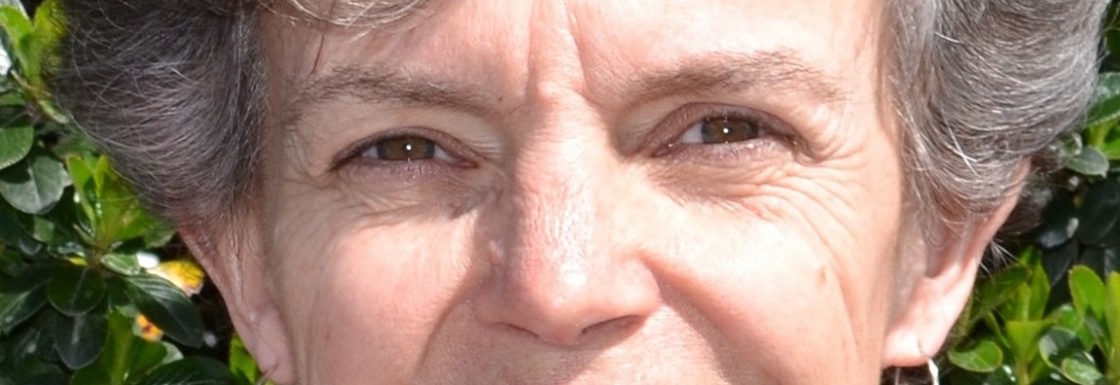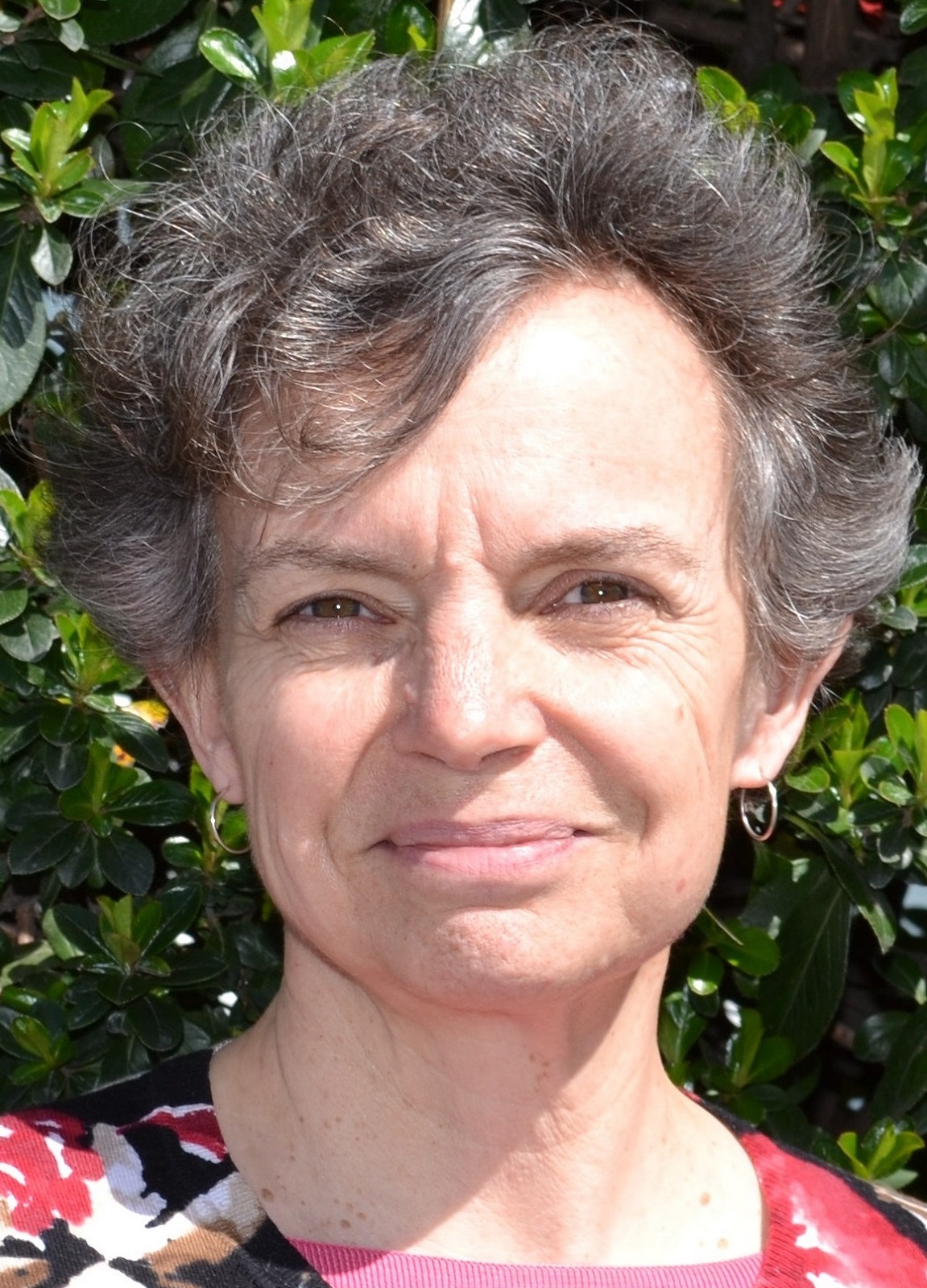Soledad Reeve Makes an Art Form of Leading BC’s Sustainable Procurement Practice

“Firstly, I don’t know who nominated me or why they thought I was worthy; but I hope I’ve won a Clean50 award for being a creative procurement professional,” Soledad Reeve says,
“Creativity is what I bring to my work that is unique, and I come by it honestly. My parents are artists, I grew up as part of a Britain-BC craft movement, and all my formal training is in design and art.”
And yet, she says, she’s drawn to trade, largely because trade is about exchange. Trade is how, and why, in large part, we get to know each other.
Soledad was also born into sustainability. Those artist parents of hers lived in rural England, putting coins that were scarce in a meter to light the house. There were Whole Earth Catalogues on the coffee table, “My parents had a friend who was making fuel out of chicken shit in the early ‘70s … I grew up practicing sustainability.”
After working at an architectural firm (for the west coast’s esteemed Paul Merrick) in her 20s and 30s, managing large construction contracts and liaising with clients, engineers, contractors and building trades, Soledad quit and went to art school in her 40s. Through that degree, she undertook a design-for-environment program to create a sustainable architectural lighting product, but despite having a interest partner, the design being good, and much admired, three years of effort, failed to produce a manufacturer and Soledad decided entrepreneurship wasn’t for her.
In 2008, she was temping for a very early Carbon Neutral Government team in Victoria when she was told about a job in the Province’s procurement shop. Her research on a sustainable supply chain for her lighting product landed her the job which, along with three other positions, was funded through BC’s first Climate Action Plan.
Soledad treated the project like “a design challenge, with government procedure as a new palette of materials” Her scope was procurement of goods and services: there were also pioneering programs going on in fleet and construction procurement, with ‘buy hybrid’ and ‘LEED Gold’ mandates setting the pace. She soon learned to delineate between “Capital P” Policy (mandates behaviour: enshrined in Legislation and Regulation – affectionately known as Legs and Regs – or Core Policy) and, “small p” policy (drives and supports behaviour: myriad network of programs, procedures and best practices).
There was no appetite at the time to use Capital P Procurement Policy to drive climate action (or any other government objective), and so the team made as many “small p” improvements as they could. Soledad added environmentally preferable criteria to the supply arrangements: the records destruction (shredding) contract to ensure they were recycling and transporting our paper in the lowest impact way, and added a silver-level environmental certification requirement to her office furniture contract. She created ‘copy and paste’ criteria and evaluation guidelines for use in RFPs to make buying green predictable and easy for both buyers and suppliers. Two-years of dogged pursuit, brought her a small Capital P Policy victory when the green procurement web pages were linked (tenuously, with a “should” instead of a “must”) to the Core Policy & Procedures Manual.
Soledad observed the marketplace, how the sectors differed and what opportunities each had to improve environmental performance. The shredding companies were already, in 2009, recycling the paper (it was, of course, a source of revenue). They were ahead. And the furniture companies were already certified or in the process, possibly thanks to Ray Anderson of Interface carpets who was promoting his newly-sustainable company’s significant operational savings. One smaller Canadian company thanked Soledad for providing the impetus for them to get certified.
It was clear the market forces were driving improved environmental practices already, and standards and certifications were making a difference. “But,” Soledad observes <“procurement is a nuanced practice, there’s no such thing as one size fits all, and soon after I learned that certifications are expensive, and requiring them could inadvertently restrict small businesses from competing. Since then I’ve concluded that showing preference to environmentally preferable goods and services plays an important role in market transition, but, because the market is out ahead, perhaps government’s role is to reward, not incent it, and to ensure a fair playing field for businesses of all sizes.”
“I was also learning by doing, spending half my time writing procurement documents, evaluating and awarding contracts, debriefing unsuccessful suppliers. I was learning the differences between procurement of goods, services and construction, and the common thread of writing clear instructions and reasonable criteria. Procurement is built on applied ethics; there’s nothing like being critiqued by a stream of unsuccessful suppliers to teach objectivity and fairness.”
 Getting uptake across government buyers was a huge challenge – not because the will was lacking but because of a simple lack of resources, “Every ministry-stakeholder meeting was like a painful sales pitch. I never encountered a climate change denier” Soledad says ”rather I pushed upstream through a river of tired faces, hard-working people with deadlines to meet on their own important objectives, and, through years of hiring freezes, dwindling resources to meet them with. Asking them to apply new layers to an already time-consumptive and specialized process seemed unreasonable, despite the importance of the outcome.
Getting uptake across government buyers was a huge challenge – not because the will was lacking but because of a simple lack of resources, “Every ministry-stakeholder meeting was like a painful sales pitch. I never encountered a climate change denier” Soledad says ”rather I pushed upstream through a river of tired faces, hard-working people with deadlines to meet on their own important objectives, and, through years of hiring freezes, dwindling resources to meet them with. Asking them to apply new layers to an already time-consumptive and specialized process seemed unreasonable, despite the importance of the outcome.
I respect those competing priorities – they are the programs that British Columbians rely on – and I respect the tireless work of public servants. So, typical to a designer, I became completely obsessed with how to use procurement to achieve sustainability objectives more efficiently.”
In 2012, Soledad was presented with an opportunity to test some theories. BC’s Climate Action Secretariat invited her to discuss bulk purchasing LED street lights. Engineers from the cities of Vancouver, Burnaby, Surrey and Port Moody were in conversation with the province’s primary electricity utility, BC Hydro, and with the Canadian Urban Institute’s Light Savers program; they all knew that street lighting was moving to LED, that the technology was now stable and prices low enough to begin the transition.
“They wondered if and how they could lend their expertise to the benefit of BC’s small communities,” explains Soledad, demonstrating the curiosity and empathy that clearly made her so right for the job. “How would this work in places “where sometimes there is one public servant who answers the phone, sells dog licences, and does all the purchasing. How could these folks purchase an expensive, new and unfamiliar technology with any confidence? And yet street lighting is often the second highest line item on that organization’s energy bill, and 60% energy savings were being reported: it had a great ROI.
Through the LED Street Lights Across BC program, Soledad led that team of engineers to set up “full service” supply contracts with five suppliers: a lighting designer was engaged to write the spec and evaluate, and created a calculator to generate ROI reports for funding applications. Buyer education was offered through quarterly webcasts, sharing practical advice on LED and its installation.
Through that supply arrangement more than 20,000 street lights have been installed across more than 50 local governments, provincial highways and public campuses – each of those has avoided a time consuming and expensive procurement process. The lights are sold through BC distributors and installed by mostly local electrical contractors, who in turn are incented by the supply arrangement to train up on LED technology in advance of the wider market transformation.
Through this experience, Soledad began to see the wide reaching network that procurement creates between buyers and suppliers, and out along supply chains to regulators, certifiers and trainers, to contractors and sub-contractors and beyond to trickle-down spending in local communities. Procurement is the common denominator: not only does it link all those market players, but through procurement specific market activities across that network of players can be coordinated and incentivized.
“What if we define a distinct portfolio of spending by the common features of energy efficiency, construction and clean technology, such as the impending retrofitting of public sector buildings to meet new codes and emission reduction targets? ” Soledad asks, and it’s a very good question.
“This is the thesis I’ve been promoting ever since, to anyone who will listen, and maybe it got me nominated for a Clean50 Award. I believe the potential is huge, and I’ve been mounting a case to explore that. They say that proposing programs to government is like moving through a revolving door – you keep going around the electoral cycle waiting for your opportunity to burst in and make your pitch. To do this you stay on top of Minister Mandate letters, strategies and announcements, watching for the perfect storm of political direction and budget availability.
With commitments for deep retrofits to public buildings, investment in developing clean technology, and a keen interest in the intersection between sustainability and procurement – and adding to that a Clean50 Award – I’m hoping that 2018 is my perfect storm!”

















